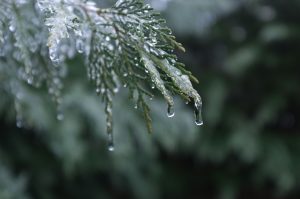Localized Variations in Winter Minimum Temperatures
Recent cold overnight temperatures during Thanksgiving weekend 2019 have illustrated the variability from place to place that can emerge this time of year. There are many locations in WA state in which observing stations are not that far apart, but minimum temperatures vary substantially, particularly on clear, cold nights.
Read moreEasterly Flow in the Passes of the Washington Cascades
The Summit at Snoqualmie Pass has the lowest base elevation (2,840’) of any ski resort in the western US. Given its low elevation and proximity to the Pacific Ocean and hence maritime air masses – the mean 850 hPa flow during winter is from the southwest at about 5 m/s – how is it cold enough to stay in business?
Read moreThe Warm Nights of Summer 2019
The summer of 2019 included very near-normal daytime temperatures for Washington state. The mean maximum temperature anomaly for the state as a whole for the months of June through August was 0.3°F (relative to 1981-2010).
Read moreOcean Weather Ship Papa: A Precipitation Time-Series
Ocean Weather Ship (OWS) Papa (P) at 50°North, 145°West was occupied almost continuously from December 1949 to August 1981 by the Canadian Weathership Program (Figure 1). These ships collected high-quality meteorological and oceanographic data that represent valuable time series for a remote location in the Northeast Pacific Ocean.
Read moreClimatology of WA’s NE Olympic-San Juan Climate Division (#2)
This is the second installment of the “Climate Divisions of WA” series, and we will focus on Climate Division 2 – the NE Olympic-San Juan Climate Division (Climate Division 1 is featured in the August 2018 edition of our newsletter).
Read moreLow Streamflows on the Skagit River in Early Summer 2019
The warm and dry spring of 2019 has raised concerns about water supplies in parts of WA state. It is unclear how much it is a coincidence, but the same topic was addressed in this space a year ago.
Read moreHumidity Variation during Heat Waves in WA State
Summer is approaching, and while there will surely be some spells of hot weather, we cannot say much about their severity. Our most extreme heat waves tend to occur in July and August, but they certainly can occur earlier in summer and occasionally well into September.
Read moreA Review of Winter 2018-2019
Seasonal weather forecasts from the Climate Prediction Center made in fall 2018 for the winter of 2018-19 were generally indicating warm and dry conditions, in line with the expected El Niño development.
Read moreMelting of the Cascade Mountain Snowpack in Spring
The date of 1 April is often considered the end of winter for the Cascade Mountains of the Pacific Northwest. Snow can continue to fall in the high country, of course, but the vast majority of the accumulation has generally occurred by that time of year.
Read moreKona Storms and Winter Weather in WA State
As detailed here, the month of February 2019 will long be remembered for its snowy weather, especially in the lowlands of western Washington. We are not the only place that has experienced some unusual conditions – here we direct our attention to Hawaii, and in particular the “Kona” storm that slammed the state during the second week of the month.
Read more
